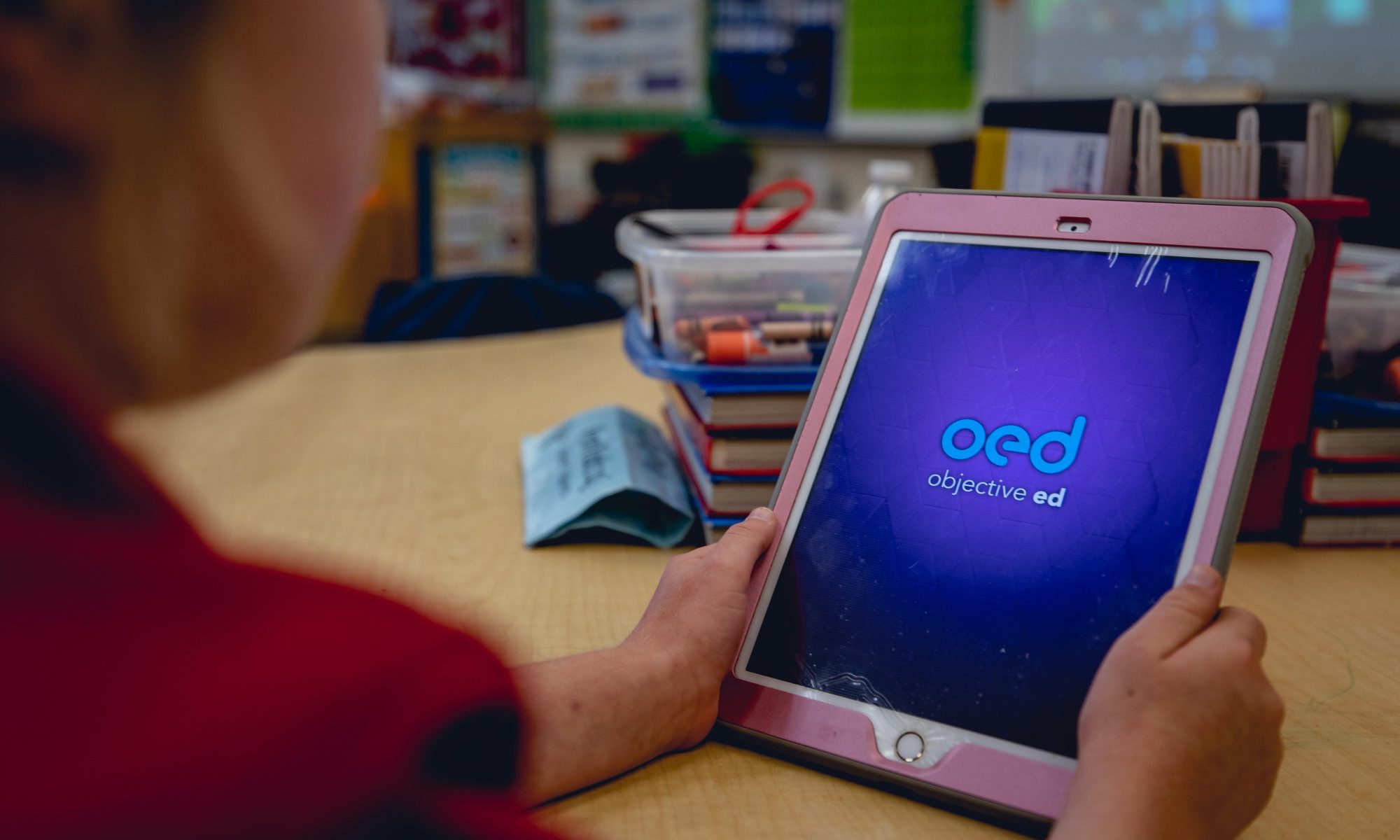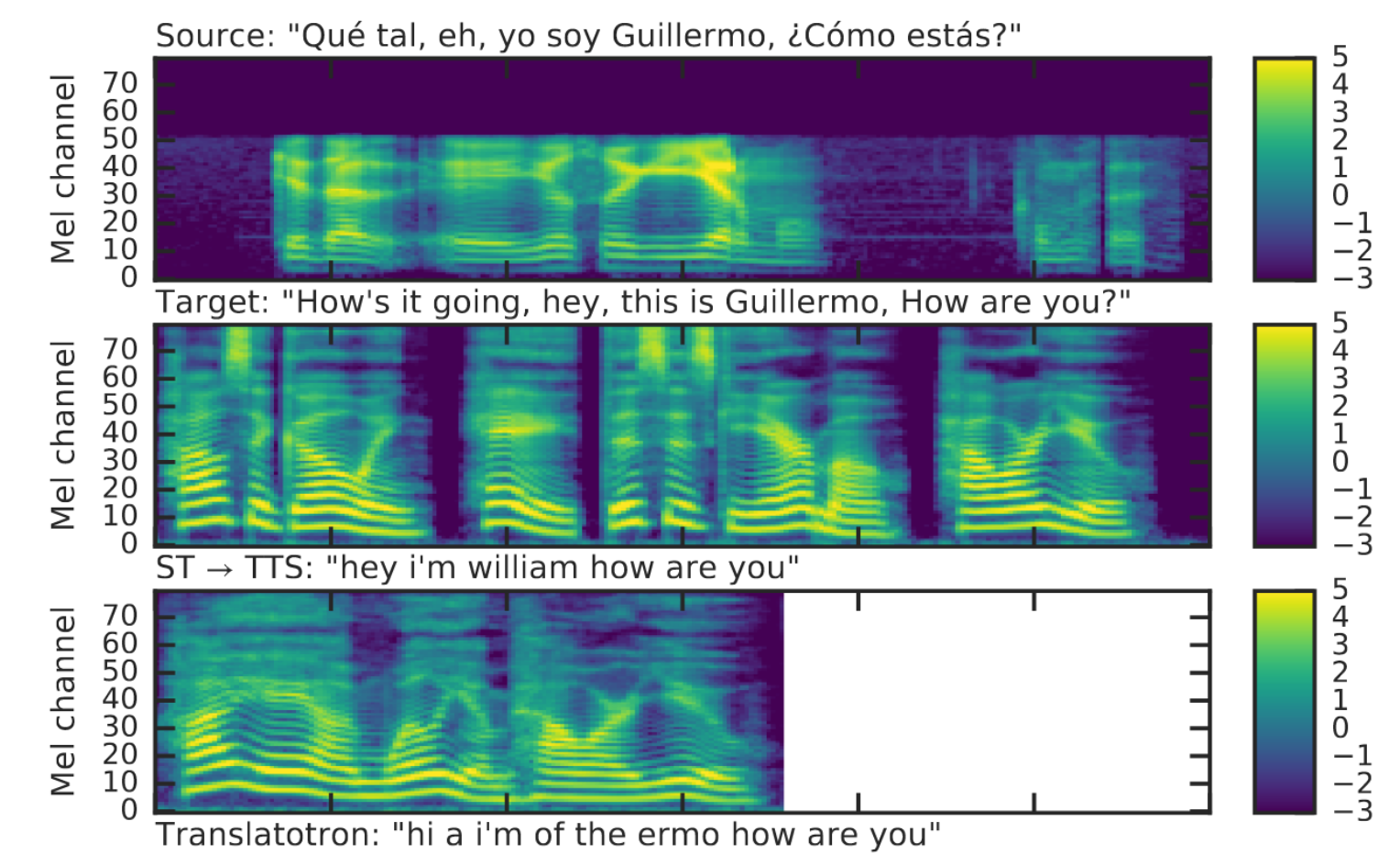Children with vision impairments struggle to get a solid K-12 education for a lot of reasons — so the more tools their teachers have to impart basic skills and concepts, the better. ObjectiveEd is a startup that aims to empower teachers and kids with a suite of learning games accessible to all vision levels, along with tools to track and promote progress.
Some of the reasons why vision-impaired kids don’t get the education they deserve are obvious, for example that reading and writing are slower and more difficult for them than for sighted kids. But other reasons are less obvious, for example that teachers have limited time and resources to dedicate to these special needs students when their overcrowded classrooms are already demanding more than they can provide.
Technology isn’t the solution, but it has to be part of the solution, because technology is so empowering and kids take to it naturally. There’s no reason a blind 8-year-old can’t also be a digital native like her peers, and that presents an opportunity for teachers and parents both.
This opportunity is being pursued by Marty Schultz, who has spent the last few years as head of a company that makes games targeted at the visually-impaired audience, and in the process saw the potential for adapting that work for more directly educational purposes.
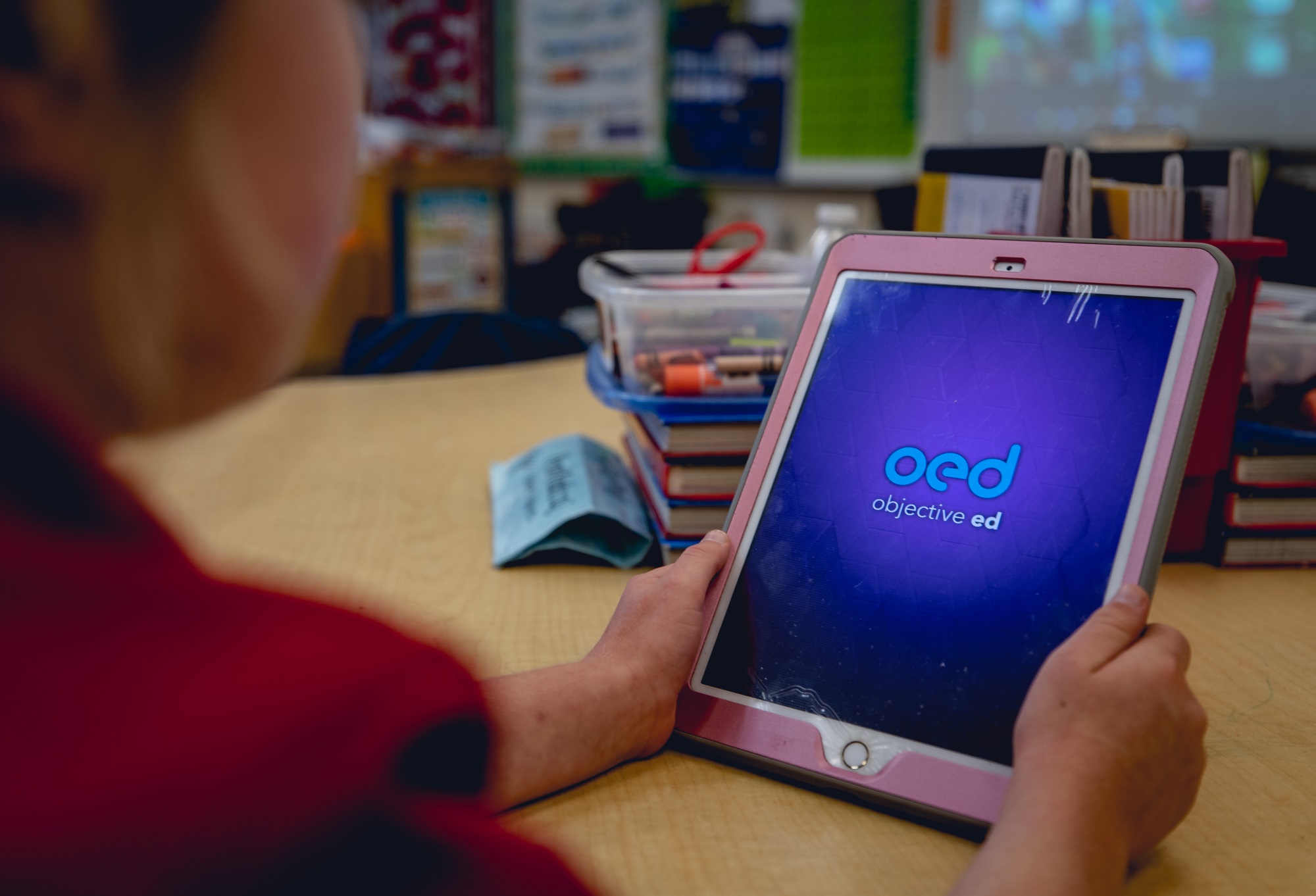 “Children don’t like studying and don’t like doing their homework,” he told me. “They just want to play video games.”
“Children don’t like studying and don’t like doing their homework,” he told me. “They just want to play video games.”
It’s hard to argue with that. True of many adults too for that matter. But as Schultz points out, this is something educators have realized in recent years and turned to everyone’s benefit.
“Almost all regular education teachers use educational digital games in their classrooms and about 20 percent use it every day,” he explained. “Most teachers report an increase in student engagement when using educational video games. Gamification works because students own their learning. They have the freedom to fail, and try again, until they succeed. By doing this, students discover intrinsic motivation and learn without realizing it.”
Having learned to type, point and click, do geometry and identify countries via games, I’m a product of this same process and many of you likely are as well. It’s a great way for kids to teach themselves. But how many of those games would be playable by a kid with vision impairment or blindness? Practically none.
Held back
It turns out that these kids, like others with disabilities, are frequently left behind as the rising technology tide lifts everyone else’s boats. The fact is it’s difficult and time consuming to create accessible games that target things like Braille literacy and blind navigation of rooms and streets, so developers haven’t been able to do so profitably and teachers are left to themselves to figure out how to jury-rig existing resources or, more likely, fall back on tried and true methods like printed worksheets, in-person instruction, and spoken testing.
And since teacher time is limited and instructors trained in vision impaired learning are thin on the ground, these outdated methods are also difficult to cater to an individual student’s needs. For example a kid may be great at math but lack directionality skills. You need to draw up an “individual education plan” (IEP) explaining (among other things) this and what steps need to be taken to improve, then track those improvements. It’s time-consuming and hard! The idea behind ObjectiveEd is to create both games that teach these basic skills and a platform to track and document progress as well as adjust the lessons to the individual.
How this might work can be seen in a game like Barnyard, which like all of ObjectiveEd’s games has been designed to be playable by blind, low vision, or fully sighted kids. The game has the student finding an animal in a big pen, then dragging it in a specified direction. The easiest levels might be left and right, then move on to cardinal directions, then up to clock directions or even degrees.
“If the IEP objective is ‘Child will understand left versus right and succeed at performing this task 90 percent of the time,’ the teacher will first introduce these concepts and work with the child during their weekly session,” Schultz said. That’s the kind of hands-on instruction they already get. “The child plays Barnyard in school and at home, swiping left and right, winning points and getting encouragement, all week long. The dashboard shows how much time each child is playing, how often, and their level of success.”
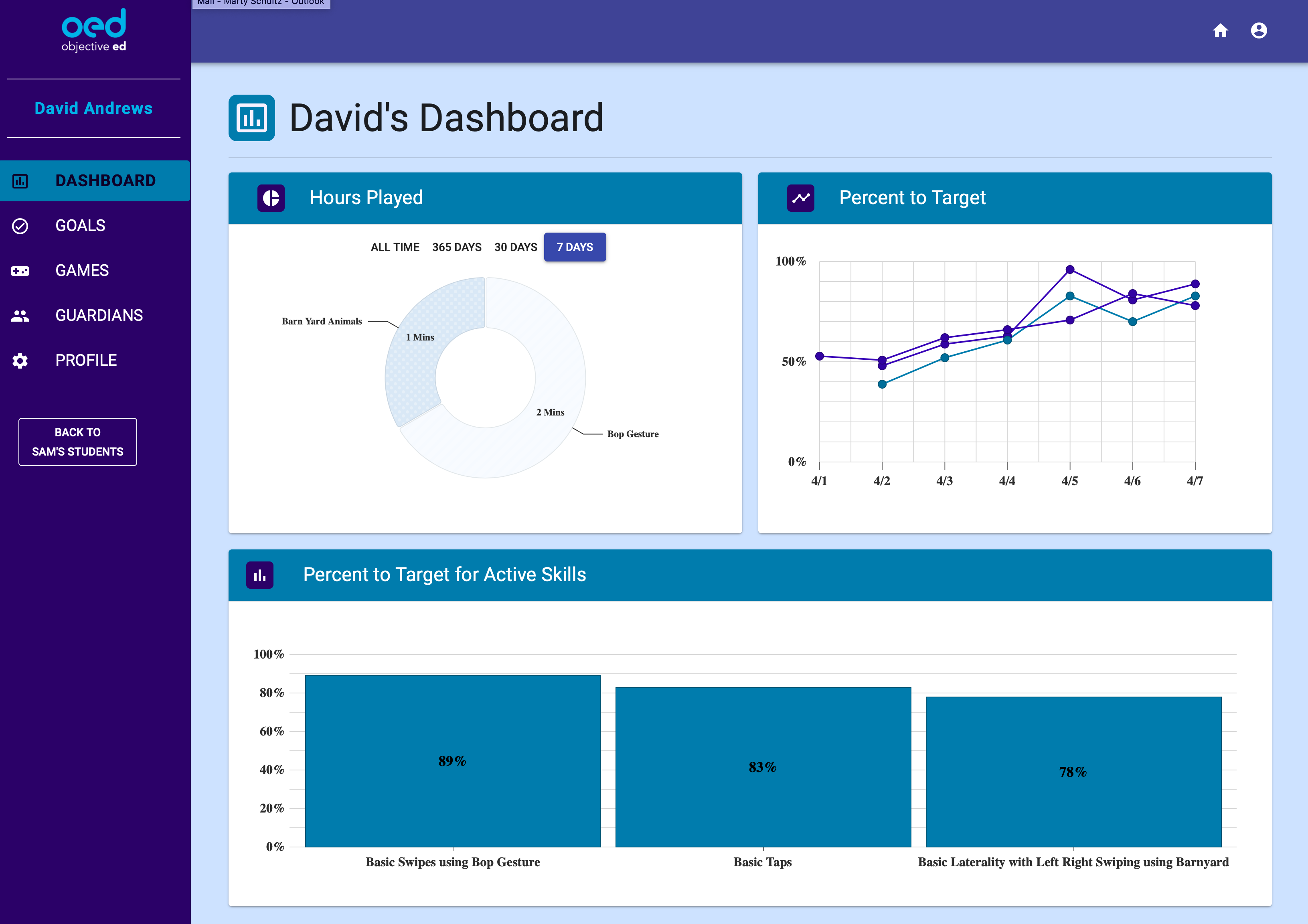
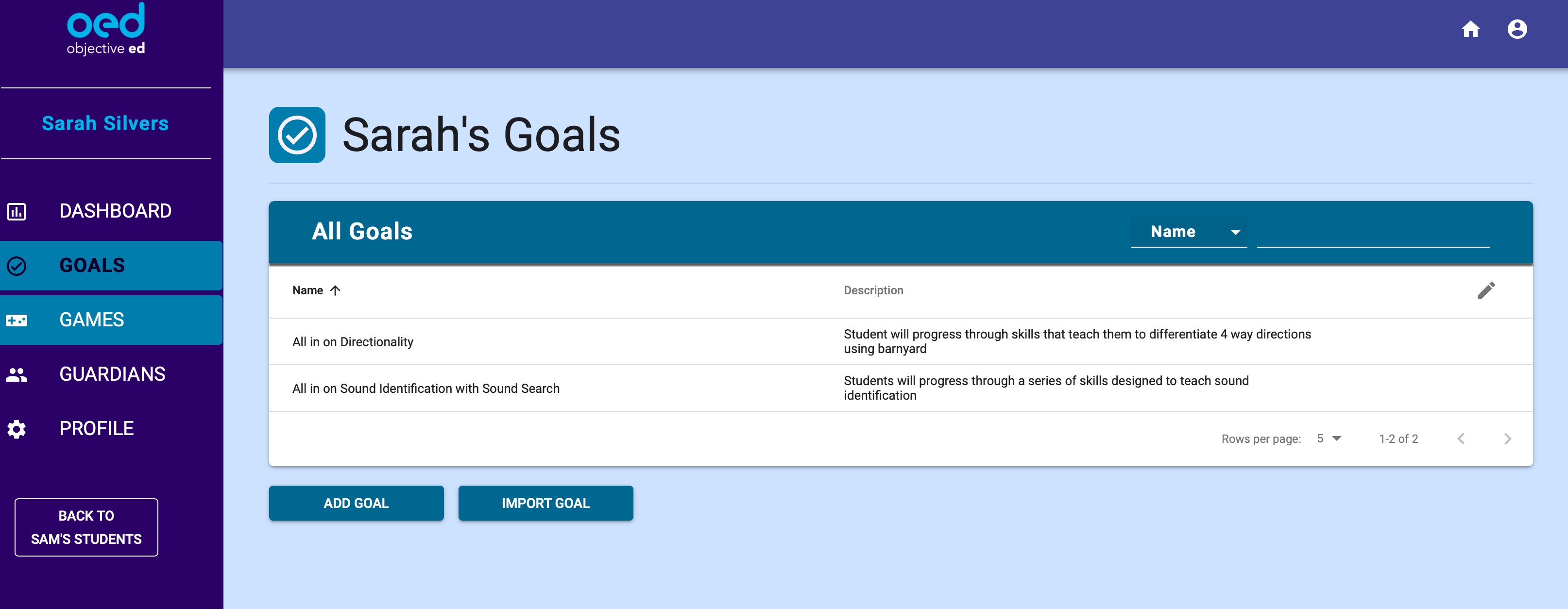
That’s great for documentation for the mandated IEP paperwork, and difficulty can be changed on the fly as well:
“The teacher can set the game to get harder or faster automatically, or move onto the next level of complexity automatically (such as never repeating the prompt when the child hesitates). Or the teacher can maintain the child at the current level and advance the child when she thinks it’s appropriate.”
This isn’t meant to be a full-on K-12 education in a tablet app. But it helps close the gap between kids who can play Mavis Beacon or whatever on school computers and vision-impaired kids who can’t.
Practical measures
Importantly, the platform is not being developed without expert help — or, as is actually very important, without a business plan.
“We’ve developed relationships with several schools for the blind as well as leaders in the community to build educational games that tackle important skills,” Schultz said. “We work with both university researchers and experienced Teachers of Visually Impaired students, and Certified Orientation and Mobility specialists. We were surprised at how many different skills and curriculum subjects that teachers really need.”
Based on their suggestions, for instance, the company has built two games to teach iPhone gestures and the accessibility VoiceOver rotor. This may be a proprietary technology from Apple but it’s something these kids need to know how to use, just like they need to know how to run a Google search, use a mouse without being able to see the screen, and other common computing tasks. Why not learn it in a game like the other stuff?
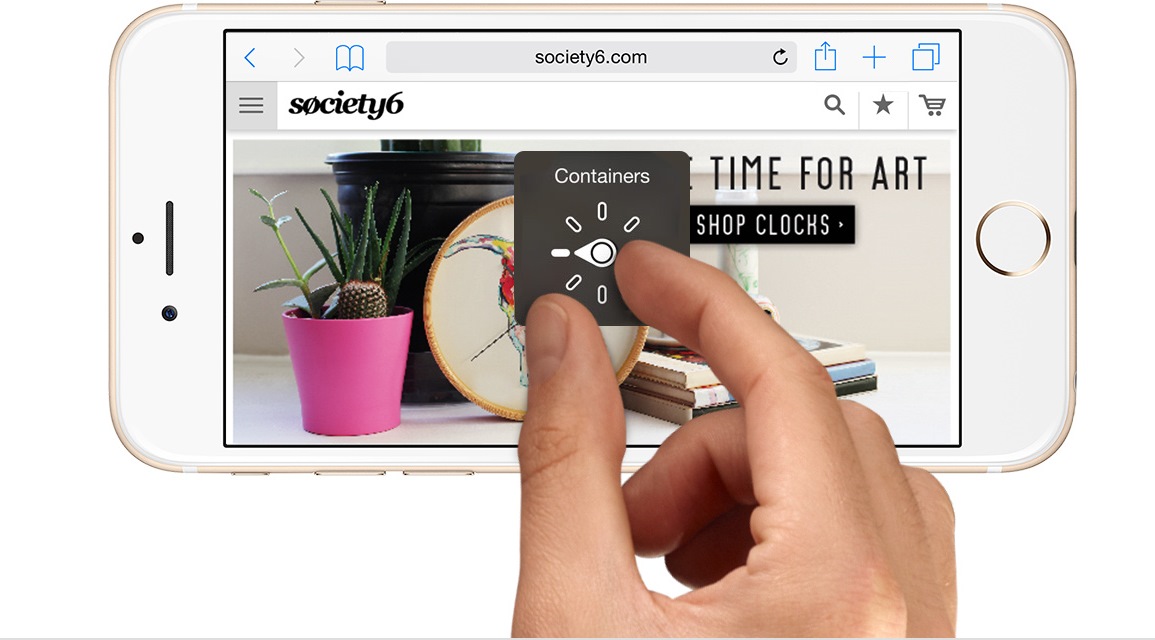 Making technological advances is all well and good, but doing so while building a sustainable business is another thing many education startups have failed to address. Fortunately, public school systems actually have significant money set aside specifically for students with special needs, and products that improve education outcomes are actively sought and paid for. These state and federal funds can’t be siphoned off to use on the rest of the class so if there’s nothing to spend them on, they go unused.
Making technological advances is all well and good, but doing so while building a sustainable business is another thing many education startups have failed to address. Fortunately, public school systems actually have significant money set aside specifically for students with special needs, and products that improve education outcomes are actively sought and paid for. These state and federal funds can’t be siphoned off to use on the rest of the class so if there’s nothing to spend them on, they go unused.
ObjectiveEd has the benefit of being easily deployed without much specialty hardware or software. It runs on iPads, which are fairly common in schools and homes, and the dashboard is a simple web one. Although it may eventually interface with specialty hardware like Braille readers, it’s not necessary for many of the games and lessons, so that lowers the deployment bar as well.
The plan for now is to finalize and test the interface and build out the games library — ObjectiveEd isn’t quite ready to launch, but it’s important to build it with constant feedback from students, teachers, and experts. With luck in a year or two the visually-impaired youngsters at a school near you might have a fun new platform to learn and play with.
“ObjectiveEd exists to help teachers, parents and schools adapt to this new era of gamified learning for students with disabilities, starting with blind and visually impaired students,” Schultz said. “We firmly believe that well-designed software combined with ‘off-the-shelf’ technology makes all this possible. The low cost of technology has truly revolutionized the possibilities for improving education.”

Source: Tech Crunch


